Side elevation
To be honest, this could probably work for a number of animals. How to Draw a Cheetah may follow.
I remember how I drew dogs as a child. The drawing was very logical and probably based more on linguistic distinctions than observing and actual dog. My partner's daughter completed a classic of the style many years ago, but we can't locate it at the moment. The head will be huge. It will be stuck on the potato body like another potato. Ears will be weird. All the legs will be on one side. There may be more than four. You know the look.
So, the first thing about Bert is that there are only four legs. These sit two to each side of his body. He has a neck. Elementary stuff.
The more advanced stuff is this.
His skeleton is an analogue of yours or mine. And gravity pretty much decides how he stands. As a dog, his food comes from the floor. He is not a predator; unless he's looking at you for food, he has no real reason to look up. And Bert is old, so there's a fair bit of sag. Like everyone else in the end.

So lets match the sketch to the Dorling Kindersley style Bert I managed to rustle up this morning (minus far legs and bits).
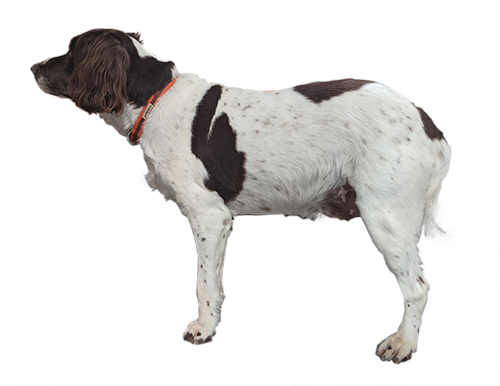
Front legs
Bert's front legs are like really folded forward arms, as if you'd pushed your elbows together in front of your chest.. His ribcage is deep and narrow, so his shoulder blades are down his sides. His elbows sit at his chest level and his fingers bend backwards into what we call paws.
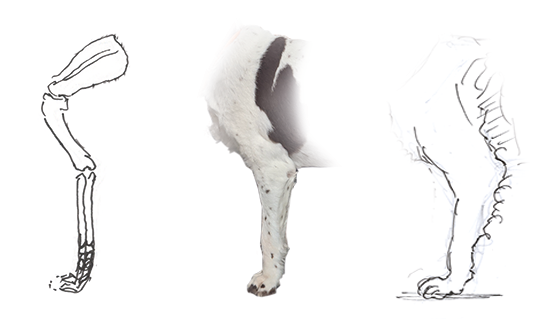
These two paws probably support 70% of a young dogs weight, so they're big. They also deal with steering, so they're big. And dogs use them for digging, so they're big. We call them Bert's diggy paws.
Being a spaniel, Bert also has Elvis fringes on the backs of his sleeves (although todays photo is a week after a rather vicious haircut)
Back legs
On Bert, these support a lot more weight than on a younger dog, but the principle's the same, and, again, they're something like ours when we're on tip-toe.
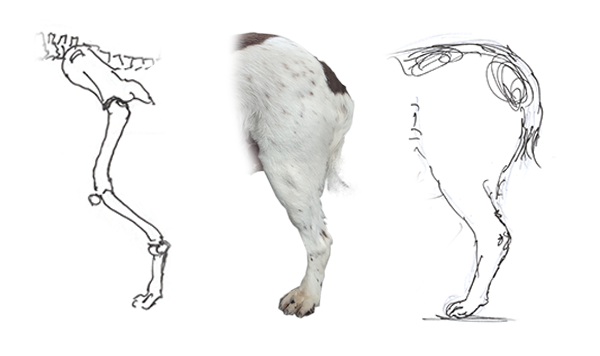
The paws are quite a bit smaller down this end in real life, but getting him to stand in a way that eliminates perspective is, frankly, not a thing. We call them Bert's rabbity paws. They are mostly to do with applying power to the ground. Dogs are very rear wheel drive.
In Bert's case, and this is not universal amongst dogs, Bert's rear tends to sit a little bit higher than his shoulders. I tend to draw him with a bigger bum since his age means muscle atrophy has started erasing his once peachy rear end.
The bits in between
This is where maybe 60% of the Bert's weight sits. Gravity pulls this weight down on the legs, hence the slight bends in the legs when standing. And, in Bert's case, his stomach (younger dogs do not look like goats). All this hangs off his spine, which is a bit like a suspension bridge, and gives him a natural curve.
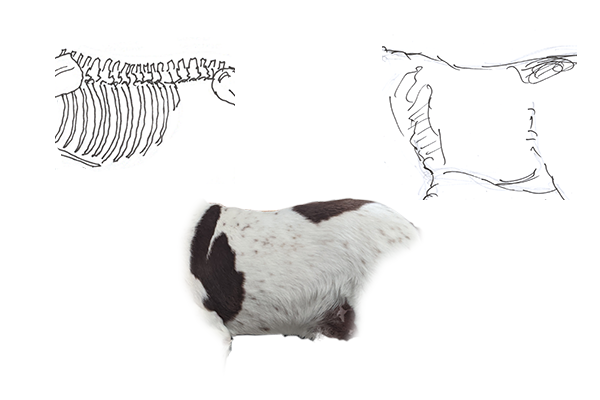
Starting to look uncomfortably like a butcher's diagram now...
The food intake bit
Bert does have a central processing unit, but its not large and 99.99% is dedicated to food. He finds this in two ways; using his enormous and highly tuned nose to find food on the floor, and also by using his big puppy eyes to transfer food from humans to himself. The finding food on the floor is by far the most time consuming, so his natural state is head down.
The actual intake is not obvious from the side. There are also two large ears, but they would appear redundant to the design, acting only as decoration it seems.
The head is joined to the shoulders by a very strong tube which is a useful place to put a lead.
As I mentioned before, with a character, I tend to start with a realistic drawing and pare things down. For characters, the actual anatomy matters very little at the head end.
So here are three varying degrees of Bert for different applications:
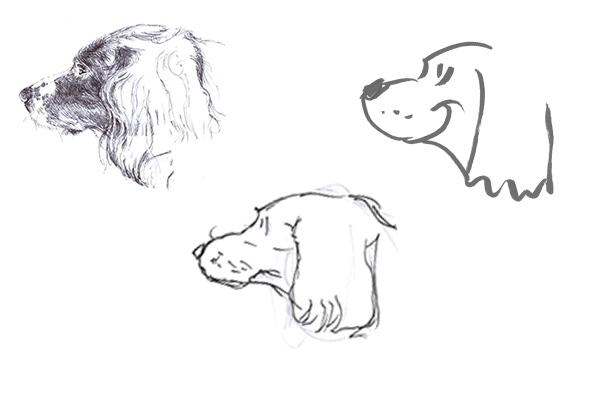
I may revisit this bit, because it isn't, strictly speaking, about how animals fit together. I find I tend to change Bert's head size depending on context, which I've only really noticed as I write this.
Tail
Bert is a rescued English springer spaniel and traditionally this breed gets its tail docked as a puppy. We took Bert on as a rescue so had no part in this; he is as he arrived. We leave a tassel on the end to make it as good as we can.
On the up side, its pretty easy to draw.
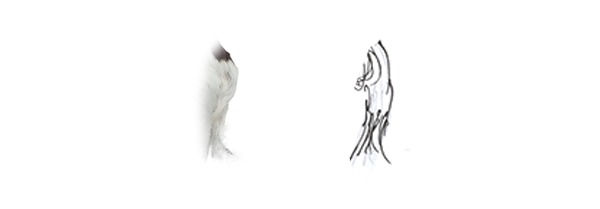
All together now
So we join all this up, and you have a static Bert.
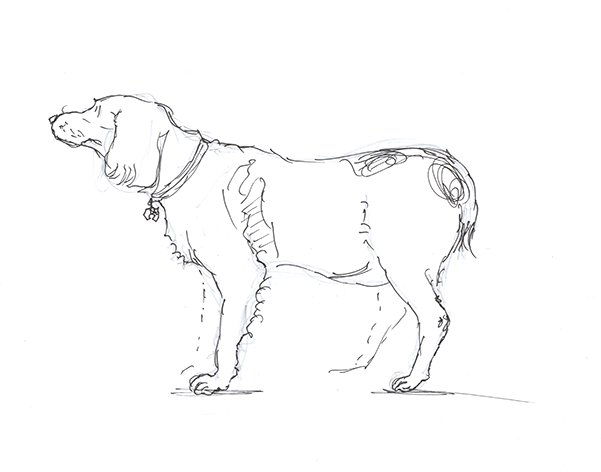
Hopefully, this will become part of a series of blog posts. It's been an interesting exercise from here, since I've never tried to explain how things work to anyone :-)


